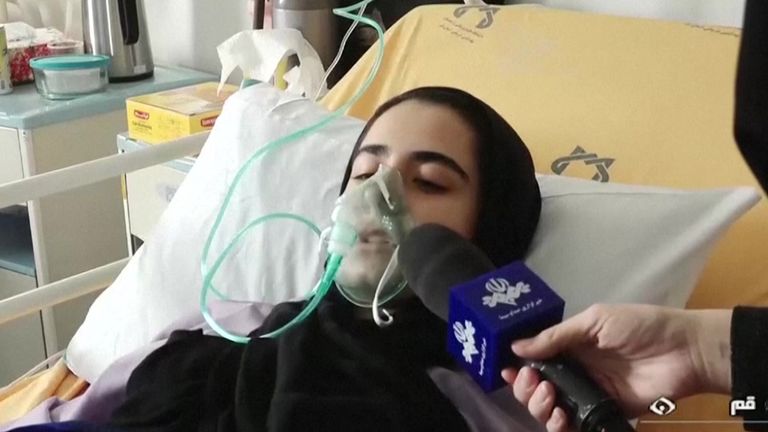WLUML Spotlight: Iranian schoolgirls under attack: Girls fighting for their right to education
“It was a terrible situation. Girls were falling on the floor and crying. Some were unable to walk, they really didn’t want to leave one another” said one of the students. “They wouldn’t let us go home, they forced us to stay inside”, said another, as reported by the CNN.[1]
Terror has swept across many schools in Iranian cities, harming one of the most vulnerable sectors of society – children. Since November 2022, more than 300 schools in 40 cities (including a few boys schools) have been attacked with poisonous gas.[2] According to one official, more than 5000 school girls fell ill after being poisoned by toxic gas exploding in their schools. This caused nausea, shortness of breath, even heart palpitations, and in severe cases also death.[3] By the end of February, 1000 students among the affected have been hospitalized. One Member of Parliament in Qom put the figure at 1,200 in Qom and Borujerd alone.[4]
There is a general agreement among the Iranian public and observers that there is a link between these poisonings and the movement of Woman, Life, Freedom that started in September 2022 after the 22-year-old Iranian woman Mahsa Amini was killed by the Iran Government’s religious morality police. Since then, the security forces have shot and killed at least 500 unarmed demonstrators and left even larger numbers seriously injured.[5] Among them are many young women who have been shot in the eye and genital areas, which clearly was not accidental given their large numbers.[6] Other arrestees were subject to torture and other sexual abuse, including rape. The world has watched thousands of schoolgirls and university students at the forefront of anti-regime protests who, despite the severe and violent crackdown by the Iranian government, have not halted the fight for freedom.
The type of poisonous gas used in schools is not in the open market and the production of such a gas requires sophisticated procedures and facilities. During the first 90 days, the government, despite mounting evidence, denied that there was any systematic attack on girls school and dismissed it as rumors by western countries and media. Finally, under mounting public pressure, on 6th March, the Supreme Leader (Ali Khamenei) announced that security forces must look into this matter and punish those guilty of the crime. Isn’t it ironic? The fact that the Iranian state, that rivals in its surveillance with China, ‘could not’ find who is behind the attacks, coupled with the above, has led the public to believe the poisoning of school girls is a collective retaliation by the regime or factions of it – to subdue the efforts of Iranian women to fight for their freedom and dignity. It is widely believed that the attackers functioned with the tacit, if not outright, support of the state.
How many lives have to be sacrificed until basic human rights, as provided under the Universal Declaration of Human Rights (UDHR), are upheld? The Iranian regime has lost its moral compass and the lives of its citizens does not seem to matter to those holding the political and military power. It is therefore even more important that international institutions such as the WHO, UNECEF and UNESCO launch an independent investigation into the causes and the short and long term health implications of these gas attack on young girls.
Women are fighting against several inhumane laws and restrictions including compulsory dress code (to wear the hijab), child marriages (Sharia-based Iranian law states the legal age for marriage for girls is 13), travel restrictions, honor killings, just to name a few. Terrorizing schoolgirls and depriving them of access to education is another validation of the gender apartheid in Iran, it is apparent that the Iranian regime, or at least some faction of the regime, is following in the footsteps of Taliban-led Afghanistan where they have already denied women from attending university and are excluding them from social and economic parts of the society.
Despite all the hardships, the women of Iran and Afghanistan are stronger than ever before. Both Iranian and Afghan women’s movements stand against the gender apartheid imposed by these oppressive regimes. In both the countries, protesters have been crushed by the regimes but still upheld an unwavering resistance. The poisoning of schoolgirls has further ignited opposition from every fraction of the society. We have seen this in recent days where protest have been held by parents outside an Education Ministry building in Tehran as well as in other cities. Similarly, dissent and protest in several parts of Afghanistan, by women against the Taliban, has encouraged both country’s women’s rights movements.
Women in Iran are struggling for gender equality and the right to freedom. The transition from a gender apartheid system to a non-sexist constitution with strong public law, which focuses on human rights and freedom, gender equality, and dignity for women, is no longer a distant dream. It could become a reality given the large scale support for the movement by the people inside the country and the millions of diaspora Iranian across the world, and if the international community offered not mere words but also action. For once, other governments have to have a long term view of their national interest and make equality and human rights of women everywhere part of their foreign policy.
About the author: Ali Mir is a human rights activist and a graduate student studying Peace and Conflict Studies at the University of Magdeburg. He is also a research fellow at Women Living Under Muslim Laws (WLUML) a transnational feminist solidarity Network.


